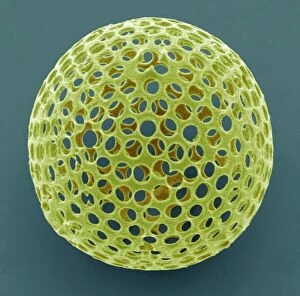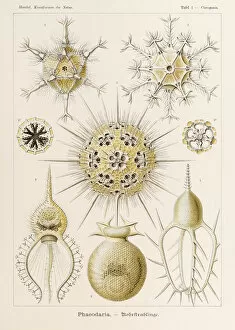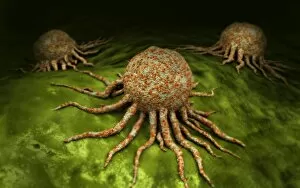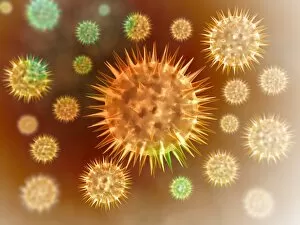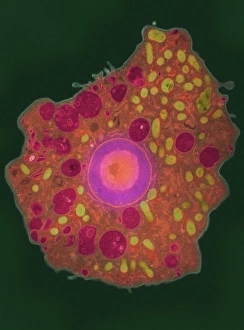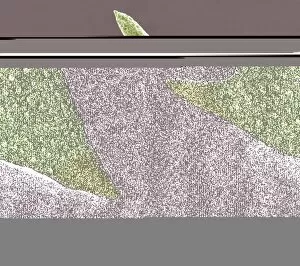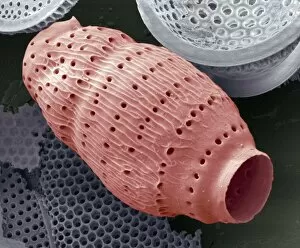Amoeboid Collection
"Exploring the Intricate World Creatures
All Professionally Made to Order for Quick Shipping
"Exploring the Intricate World Creatures: Acrosphaera radiolarian and Circogonia Phaeodaria" In Plate 1 of Ernst Haeckel's renowned Kunstformen der Natur (Art Forms in Nature), we are introduced to the mesmerizing beauty of Acrosphaera radiolarian. This intricate SEM image captures the delicate structure and unique characteristics of this amoeboid organism, showcasing its stunning complexity. Moving on to Picture No. 11675479, our fascination deepens as we encounter Circogonia Phaeodaria, another captivating example from Haeckel's collection. Its ethereal form seems almost otherworldly, leaving us in awe of nature's boundless creativity. As we delve further into the microscopic realm, a conceptual image reveals Radiolarians with their skeletal frames. These tiny creatures construct intricate structures that serve both as protection and support for their fragile bodies – a testament to their remarkable adaptability. Shifting gears slightly, we explore cancer cells through vivid imagery. In one snapshot, red blood cells flow alongside cancer cells, reminding us of the relentless battle waged within our own bodies against this formidable disease. Conceptual images depicting cancer viruses captivate our attention once again – these haunting visuals symbolize the invisible enemy that threatens human health worldwide. They serve as a stark reminder of the ongoing quest for effective treatments and cures in modern medicine. Microscopic views offer glimpses into phagocytic macrophages at work – tirelessly engulfing foreign particles and pathogens to protect our immune system from harm. Their tireless efforts underscore the importance of these crucial defenders within our bodies' defense mechanisms. Concluding our journey is a striking 3D rendering showcasing macrophage phagocytosis in action – an impressive display highlighting how these specialized cells efficiently eliminate threats by engulfing them entirely.

